The Moon
- Books Name
- Class-8 Science Book
- Publication
- PathSet Publications
- Course
- CBSE Class 8
- Subject
- Science
The Moon
Introduction
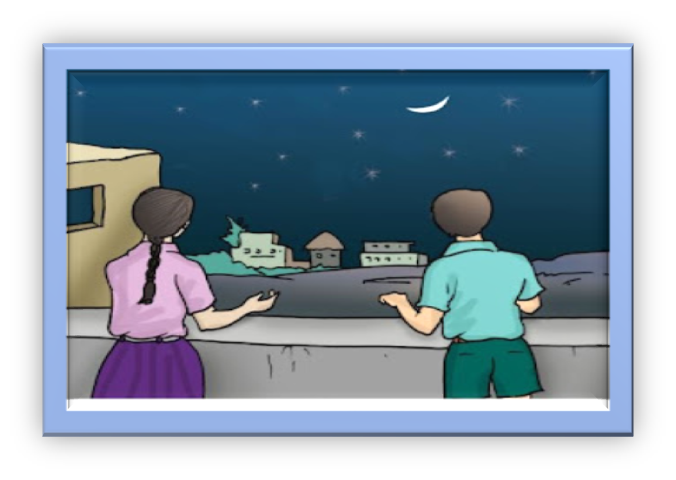
The moon is the brightest object in the night sky.
All-natural objects like the stars, the planets, the moon and many other objects in the sky are celestial objects.
1) Celestial Objects: Planets, stars, moon and other objects in the sky are called celestial objects.
2) Astronomy: The study of celestial objects and related phenomena is called astronomy.
Celestial Objects:-
The stars, the planets, moons and many other objects which are present in the sky are known as Celestial Objects.
All the objects outside the Earth’s atmosphere are collectively referred to as celestial bodies.
The sun and other stars in the sky appear to rise in the east and set in the west because the earth
rotates about its axis from west to east. All nine celestial bodies of the solar system shine due to
the light they reflect from the sun.
Celestial Bodies
- The Universe includes all the stars, planets and galaxies and its size is unknown.
- However, there is a spherical region of the universe that can be observed from the Earth which is called the Observable Universe.
- This Observable Universe comprises different physical objects that occur naturally on their own. These objects are called celestial objects.
- For example, the sun, the moon, the stars and the planets in our solar system all are called celestial objects.
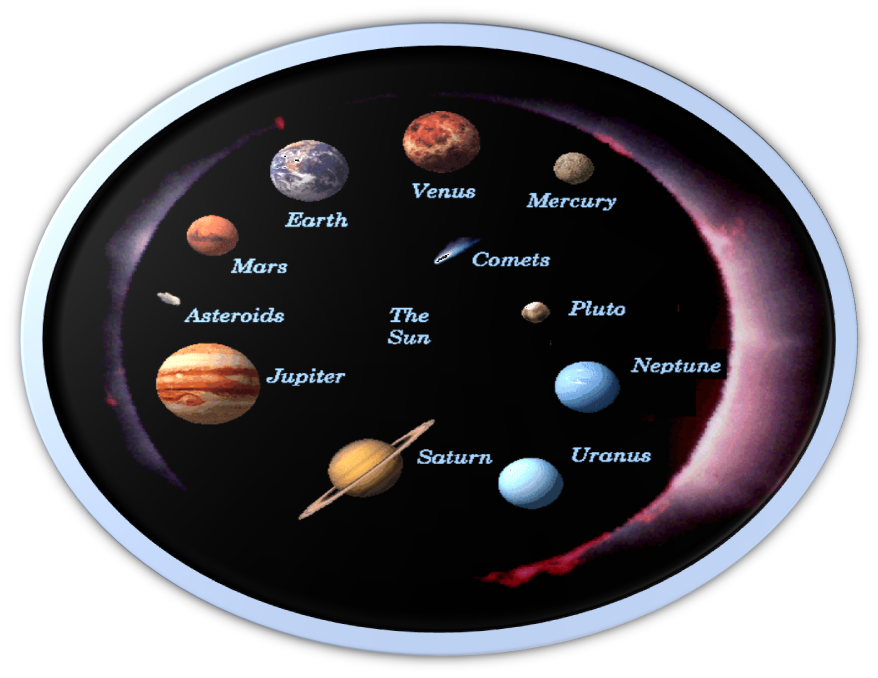
Astronomy
- Astronomy is the study of celestial objects and the phenomena associated with them. It is said to be one of the oldest Sciences in the world.
- It is associated with the study of the evolution of the universe, the motion of the celestial objects and their formation.
- In ancient times astronomers used to study the sky and observe the changes in it at night time. With these methodological observations, they used to devise calendars.
- They also help in predicting the climate of a place and the rainfall patterns.
- These interpretations are used to help the farmers in choosing the right crops for a certain season and in finding the right time to sow the seeds.
- Their interpretations also help in deciding various festivals in India and the occurrence of seasons.
- Nowadays, there are computers that help in methodological observations of the sky.
The Moon
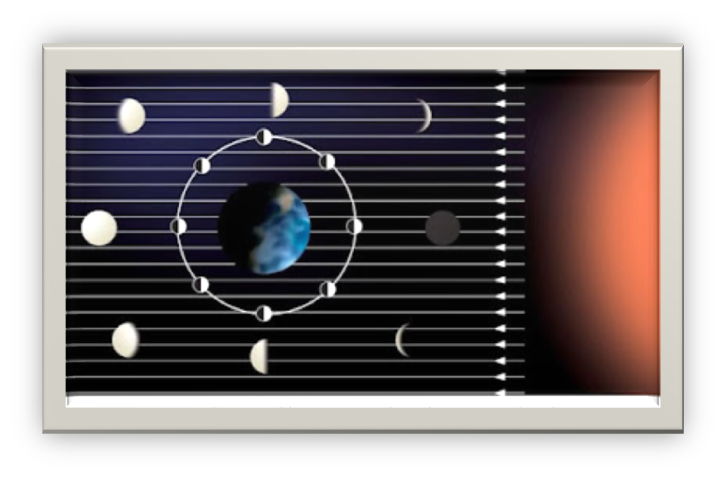
→ The various shapes of the bright part of the moon as seen during a month are called phases of the moon.
• New Moon day → when the moon is not visible
• Full Moon day → when the full moon is visible
→ The gap between consecutive new moon day and full moon day is of 15 days.
→ The rotational period and revolution period of the moon is the same (almost 29 days).
Moon’s surface
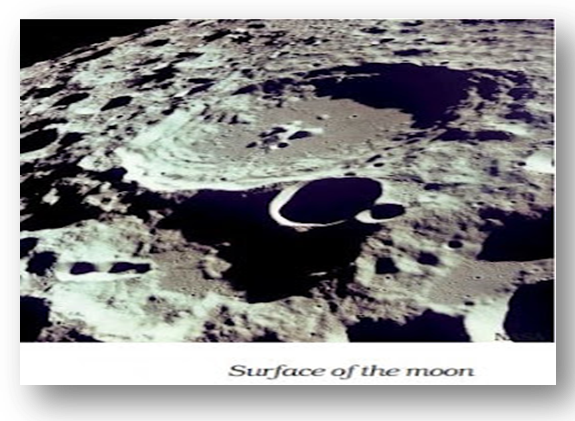
→ Because of the lack of atmosphere, one cannot hear any sound on the moon.
- We know that the moon is a natural satellite of the earth that revolves around the earth in a fixed orbit.
- Just like the earth other planets of the solar system also have their own moons or natural satellites.
- Also, the moon does not emit any light of its own but it reflects the light of the sun that falls on it.
- However, as the moon revolves around the earth the part of the Moon that faces the sun gets to light up while the other part remains in dark.
- This results in different shapes of the moon in the sky.
- These shapes of the lit part of the Moon are called the ‘Phases of the Moon’.
The Phases of the Moon
- The phases of the moon repeat themselves after every 29 days and there are eight major moon phases.
- The day when we can see the whole moon in the sky is called a ‘Full Moon Day’. On this day this sunlight falls all over the moon.
- Now as the moon revolves and changes its position, the part which receives sunlight starts to decrease and the moon appears as if it is getting thinner.
- On the 15th day after a Full Moon, the moon becomes completely invisible as no light of the sun falls over it due to its position behind the Earth. This is called a ‘New Moon Day’.
- The next day the moon that appears in the sky is called ‘Crescent Moon’.
- From this day, the moon starts growing larger until the 15th day when it reaches its full shape, that is, the Full Moon Day comes.
- Waning Phase of the moon: it is the phase of the Moon in which it decreases in size.
- Waxing Phase of the moon: it is the phase of the moon in which it increases in size.
Blue moon – Generally there occurs one New Moon every month. However, at times, there can be two new moons in a single month. The second New Moon in a month is called the Blue Moon.
The phases of the Moon hold an importance in the Indian society and culture as different festivals in India are celebrated depending upon the Phases of the Moon.
Phases of the Moon
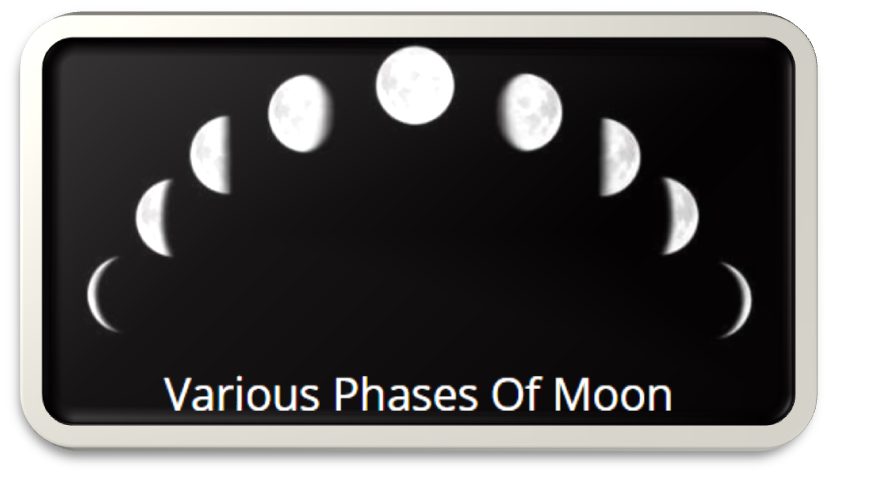
- We always see the same side of the Moon because the Moon completes one rotation on its axis at the same time as it takes to complete one revolution around the earth.
- Phases of the Moon can be defined as the different shapes or appearance of the visible part of the Moon as seen from the Earth.
- The phases of the moon occur due to its continuously changing positions with respect to the Earth and the Sun.
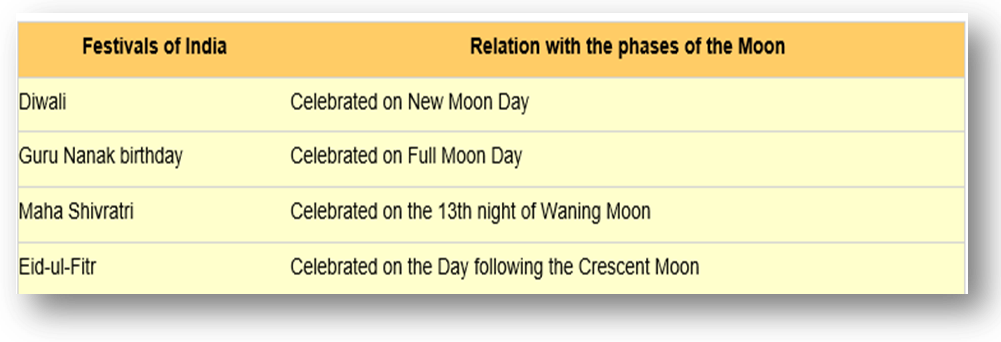
The Surface of the Moon
- The surface of the Moon is barren and all covered with dust.
- There are Craters or bowl-shaped cavities present on the surface of the Moon.
- There are steep and high mountains present in huge numbers on the Moon.
- Some of the mountains are as high as the highest mountains found on the earth.
- There is no presence of water and atmosphere on the moon.
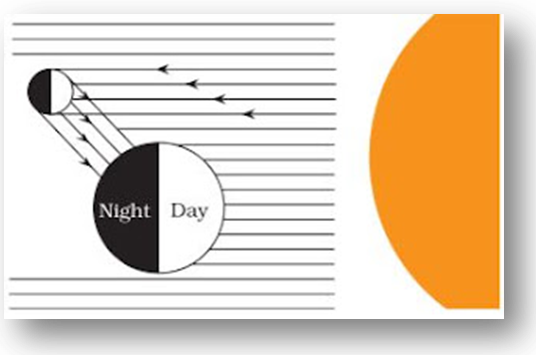
→ Moon is visible due to reflected sunlight
Can we hear sound on the Moon?
There is no atmosphere on the Moon that is, no gases are present on the Moon that could act as a medium for the propagation of sound. Hence, the astronauts of the Moon cannot hear each other.
They generally use signs or microphones to communicate with each other.
Who was the first Astronaut to land on the Moon?
Neil Armstrong was the first person to land on the moon followed by another Astronaut Edwin Aldrin. Neil Armstrong landed on the moon on July 21, 1969.
What is a Lunar Eclipse?
- The lunar eclipse occurs when the moon, the Earth and the Sun are very closely aligned with each other and the earth is present exactly in the middle of the moon and the sun.
- Hence, the shadow of the earth falls upon the moon.
- Therefore during the lunar eclipse, the moon does not reflect the light of the sun but the light that it receives from the earth.
- As a result, the moon appears reddish in colour during a lunar eclipse.
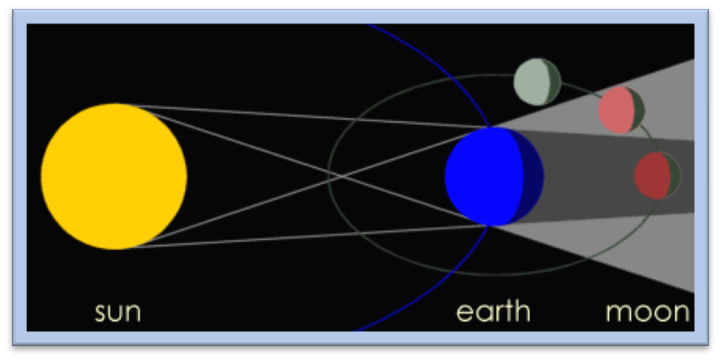
The Stars
- Books Name
- Class-8 Science Book
- Publication
- PathSet Publications
- Course
- CBSE Class 8
- Subject
- Science
The Stars
- These are objects which twinkle in the sky at night.
- There is a large number of stars in the sky.
- Sun is the nearest star to our planet which is approx 150 million km away from Earth.
- The distance of the Sun from the Earth may be said to be about 8 light minutes.
Light Year
It is defined as the distance traveled by light in one year. And it is the unit to measure large distances. The speed of light is about 300,000 km per second.
The Stars
- The stars are celestial bodies comprising of hot gases (mainly helium and hydrogen).
- All the stars emit their own light.
- All the stars are not the same. They may vary in brightness, size, colours and temperature.
- They are massive in size however they appear as a point-sized object from the Earth’s surface.
- This is so because they are at a huge distance from the earth.
- Stars have a life period. They take millions of years to be born and live for tens of millions of years and eventually come to an end. Due to their long lifespan, the changes in the stars are not very sudden. Hence, they appear as permanent to us.
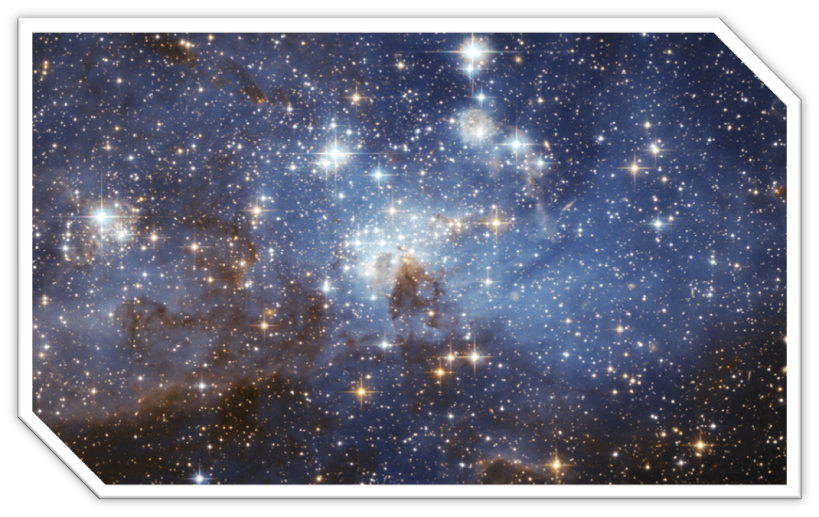
Why do stars twinkle?
Stars emit light that when entering the earth's surface has to travel through the several layers of the earth’s atmosphere. Hence, it appears that the light is traveling in a zig-zag motion due to the change in densities of the earth’s atmosphere and the density of the space. Therefore, it appears to us as if the stars are twinkling.
Why Sun is a Star?
- The sun is also a star because the sun can produce heat and light energy on its own.
- The sun has a life period just like every other star.
- The sun is estimated to be born around 5 billion years ago and would live for the next 5 billion years.
Distance between the Sun and the Earth
- The sun does not appear as a point-sized object like other stars because the sun is at a close distance to the earth as compared to other stars.
- The distance between the Earth and the Sun is estimated to be 150,000,000 km.
- The star that is closer to the Earth, after the sun, is called Alpha Centauri. The distance between the Earth and the Alpha Centauri is estimated to be 40,000,000,000,000 km.
Light Year
- The distance between celestial objects is described in light-years.
- A light-year, as the name suggests, is the total distance light travels in 1 year’s time.
- The speed of light = 300,000 km per second
- The distance between the sun and the earth = 8 light minutes
- The distance between Alpha Centauri and the earth = 4.3 light-years
Why are stars invisible during the daytime?
Stars are present in the sky during the day as well as at night time. However, during the daytime, the sunlight is so bright that it becomes difficult to locate stars in the sky.
Can Stars Change their positions?
If we observe a star or a group of stars for some hours their position appears to change. This is because of the motion of the earth. The earth keeps on revolving around the sun and hence changes its position with respect to the stars.
Why do Stars appear moving from east to west?
The rotation of the Earth takes place in a direction from west to east. To us, it appears as if the earth is still and the sky is moving from east to west direction. However, it is not true. Also, this is the same reason why the sun appears to rise from the east and set in the west.
The significance of the Pole Star
The pole star also called Polaris is situated close to the earth's axis of rotation. As a result, the position of the pole star appears to be fixed. This is unlike the other stars as their position keeps on changing with respect to the earth.
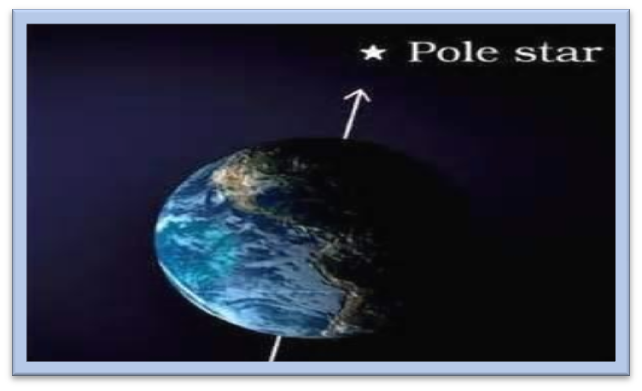
Constellations
- Books Name
- Class-8 Science Book
- Publication
- PathSet Publications
- Course
- CBSE Class 8
- Subject
- Science
The Constellations
- A constellation is described as a group of stars that form a recognizable shape or pattern.
- Ancient people used constellations as a way to recognize the stars.
- The shape of the constellations generally resembles objects that ancient people used.
- There are not only 5 to 10 stars in a constellation. A constellation comprises several stars but only some of them which are the brightest can be viewed.
- The stars that make up a constellation are found in the same line of sight; however, the distance between these stars is not the same.
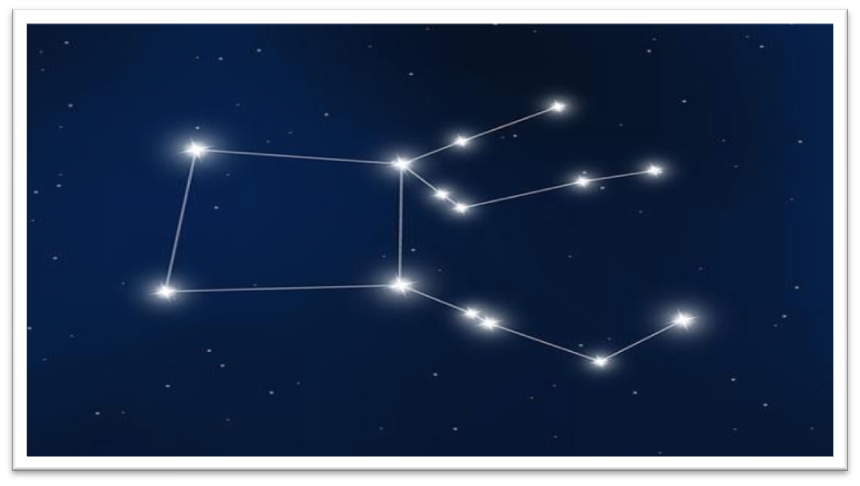
Major Constellations
1. Ursa Major or the Great Bear or Saptarishi or the Big Dipper
- This constellation comprises seven major stars.
- These stars form the shape of a big question mark or a ladle.
- The handle of the ladle is made by joining the 3 stars in a row and the remaining four stars are in the shape of the bowl of the ladle.
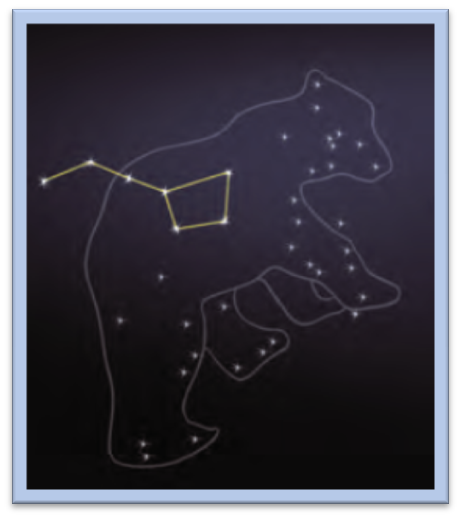
Significance of Saptarishi
The seven stars in the Ursa Major constellation are believed to signify seven saints according to Indian mythology. These seven saints are believed to preserve the knowledge of the Vedas that they propagate to people in every new age.
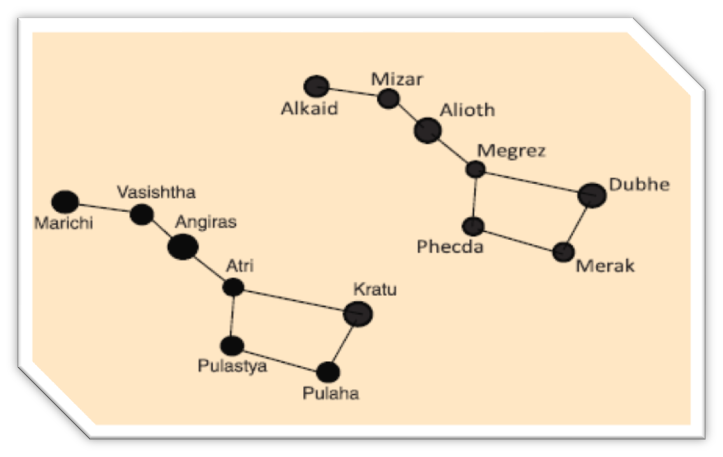
How can we locate Pole star using Ursa Major?
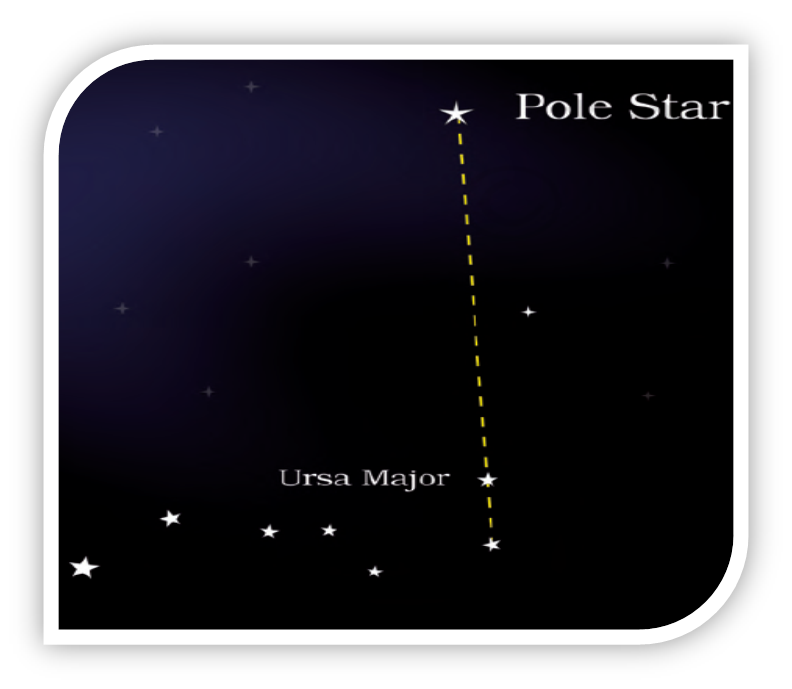
- The Ursa Major constellation includes two stars called Merak and Dubhe.
- If we draw an imaginary line from Merak to Dubhe and extended further in the same direction the first bright star that we would come across is the pole star.
- The pole star is located above the northern hemisphere and hence it cannot be seen through the southern hemisphere.
- Similarly, many constellations of the northern hemisphere can't be located from different points of the southern hemisphere.
2. Orion or the Hunter
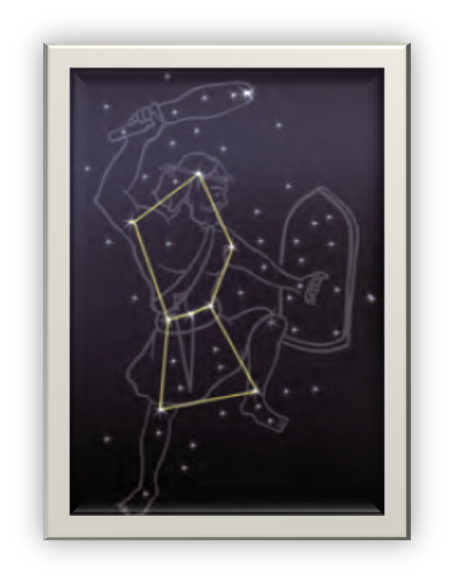
- It is one of the most magnificent constellations of the sky.
- It comprises 7 or 8 bright stars.
- There are three stars in the middle that appear as the belt of a hunter.
- The remaining four stars are arranged in the form of a quadrilateral.
3. Sirius Star
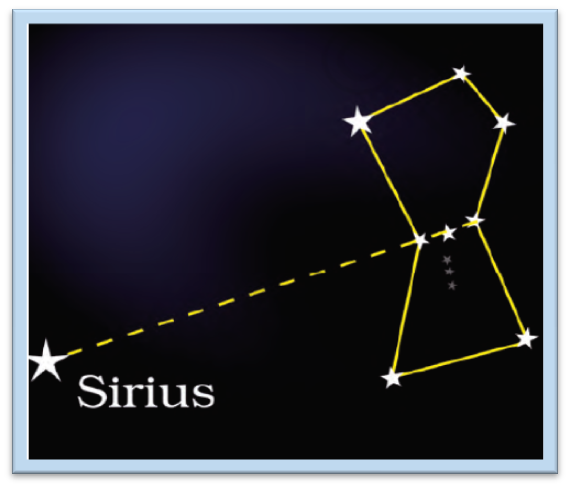
- The Sirius Star is the brightest star in the sky.
- It can be located with the help of the Orion constellation.
- If we draw an imaginary line through the three stars in the middle of the Orion and extended further we will reach the brightest star, Sirius.
4. Cassiopeia
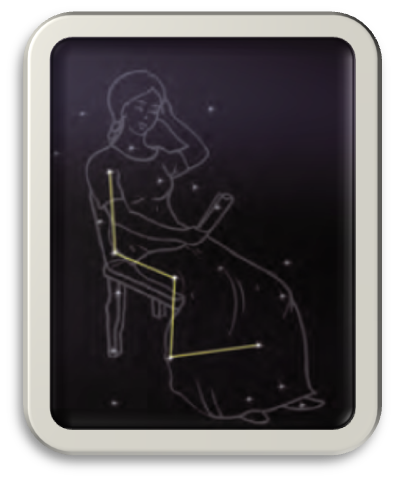
- It is a constellation found in the Northern hemisphere and can be located in the sky during the winter season at the beginning of the night.
- The shape of this constellation resembles a W or a distorted M.
- The name of this constellation was given after queen Cassiopeia in Greek mythology.
4. Leo Major
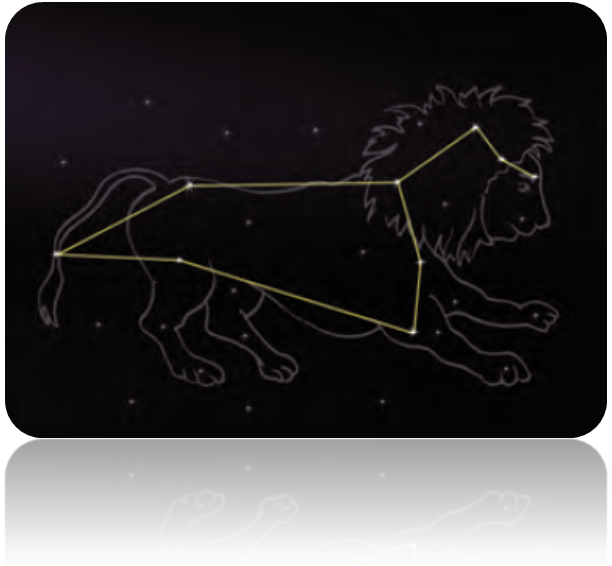
- It consists of several bright stars and that is why it can be easily located in the sky.
- It can be viewed from the Northern hemisphere (January to June) as well as the Southern hemispheres (summer and autumn).
- The Leo appears upside down from the southern hemisphere.
- It is one of the oldest constellations that were recognized almost 6000 years ago.
- This constellation signifies the Adventures of Hercules.
The Solar System
- Books Name
- Class-8 Science Book
- Publication
- PathSet Publications
- Course
- CBSE Class 8
- Subject
- Science
The Solar System
- The Solar System comprises the sun, the planets, asteroids, meteors and other celestial bodies.
- There is a gravitational attraction between the sun and the celestial objects that keep them revolving around the sun.
- The sun acts as the main source of heat and light energy for all the planets in the solar system.
The Planets
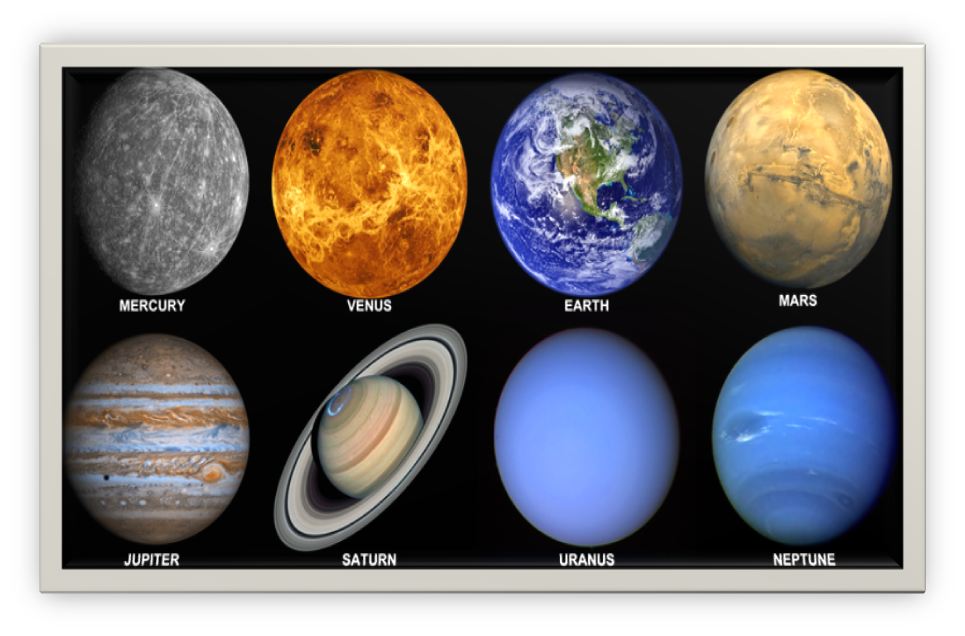
- Our solar system comprises 8 planets: Mercury, Venus, Earth, Mars, Jupiter, Saturn, Uranus and Neptune. The planets do not have their own light. They can reflect the light of the sun that falls upon them.
- The planets revolve around the sun in a fixed path called
- The period of revolution of a planet is the time that it takes to complete one revolution around the sun. As the distance between the sun and the planets increases the period of revolution of that planet also increases.
- All the planets also revolve around their own axis. The time of rotation of a particular planet is defined as the time it takes to complete one rotation.
- The planets have satellites or celestial objects that revolve around them.
- For example, the moon is a natural satellite of the earth. However, there are different artificial satellites also that revolve around a planet.
Why do planets not fall into the sun?
- We know that the sun exerts a gravitational force on all the planets. But they do not fall into the sun because they are also revolving around the sun in a fixed path. This revolution prevents them from falling off into the sun.
Mercury
- It is the planet that lies closest to the sun.
- It is the smallest of all the planets.
- It is difficult to observe Mercury because it hides in the glare of the sun.
- Therefore it can only be observed or viewed in the sky just before the sunset or before the sunrise.
- It has no natural satellite of its own.
Venus
- It is the brightest planet.
- It can sometimes be viewed in the eastern sky before the time of the Sunrise or in the western sky before the sunset. Hence it is often called morning or evening star.
- It has no natural satellite of its own.
- Venus rotates from east to west, unlike the Earth which rotates from west to east.
- Venus also shows phases just like the moon.
Earth
- Life exists only on earth.
- The earth has favorable environmental conditions such as the presence of atmosphere and water that enable the existence of life on the earth.
- The temperature conditions of the Earth are also favorable for the existence of life because it is at a perfect distance from the sun.
- The earth possesses a tilted axis which results in changing of seasons on the earth.
- The earth is covered with water naturally and therefore appears bluish-green when viewed from space. The earth possesses its own natural satellite - the moon.
Orbital and Equatorial Plane of the Earth
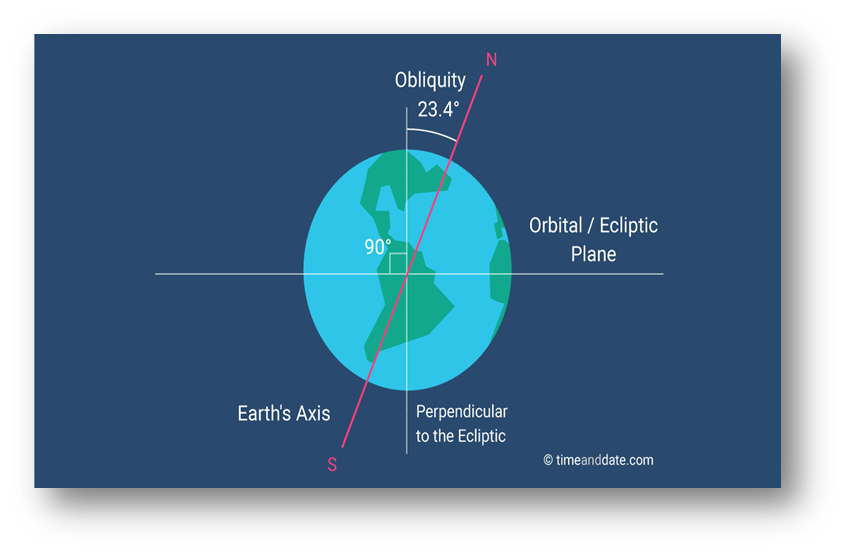
Orbital Plane of the Earth
We know that earth revolves around the Sun in an orbit. The plane in which it revolves around the Sun is called its orbital plane.
Equatorial Plane of the Earth
The Equator is an imaginary line drawn from the middle of the earth. The plane of the equator is called the equatorial plane.
The equatorial plane and the orbital plane of the earth are inclined at an angle of 23.5o. Hence, the axis of the earth is tilted at an angle of 66.5o to the orbital plane.
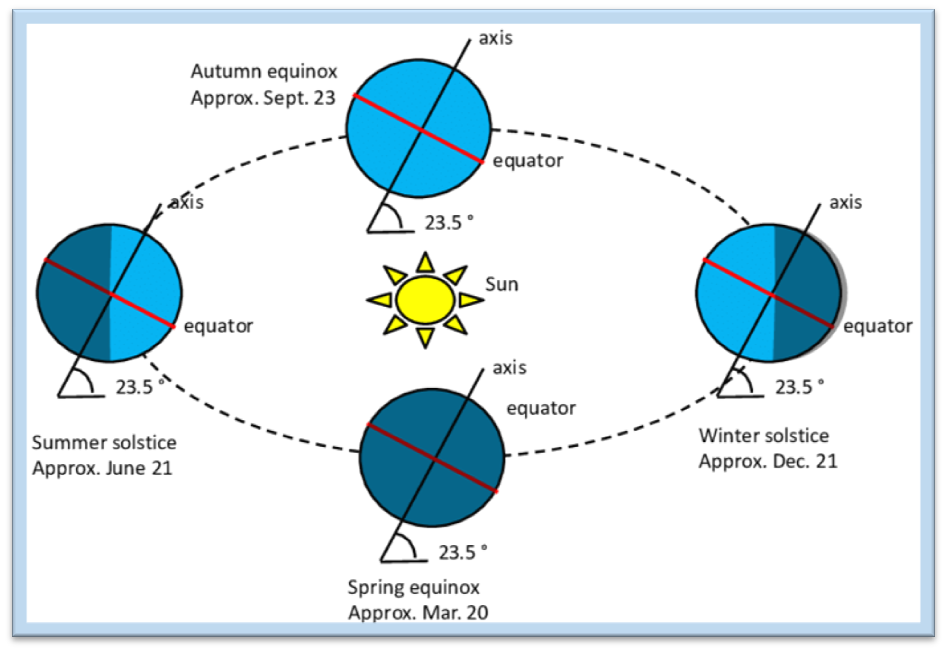
Mars
- It is called the red planet because it has a reddish colour.
- It has two moons of its own.
What is Mangalyaan?
- Mangalyaan is an Orbiter launched by ISRO (Indian Space Research Organisation) that orbits around Mars. It was launched in November 2013 and was placed in its orbit around Mars in September 2014 successfully. India is the first country that could place an orbital in its orbit in the first attempt.
Jupiter
- It is the largest planet in the solar system. It can comprise 1300 Earth-like planets.
- It does not have a high mass as compared to its size. The mass of Jupiter is almost 318 times the mass of the earth.
- The rotation time of Jupiter is small around 9 hours 55 minutes.
- Jupiter has many moons out of which 4 large moons can be viewed from the earth with the help of a telescope.
- Jupiter has thin rings around it.
Saturn
- Saturn has thick rings around it that can be easily viewed with naked eyes.
- It has 30 natural satellites of its own.
- The density of Saturn is less than that of water making it the least dense Planet of the solar system.
Uranus
- Just like Venus, Uranus rotates from east to west.
- It has 21 natural satellites.
- The rotation axis of Uranus is highly tilted.
- The atmosphere of Uranus comprises hydrogen and methane gas mainly.
Neptune
- It is the farthest planet from the sun hence it takes the most time to revolve around the sun.
- It has 8 natural satellites of its own.
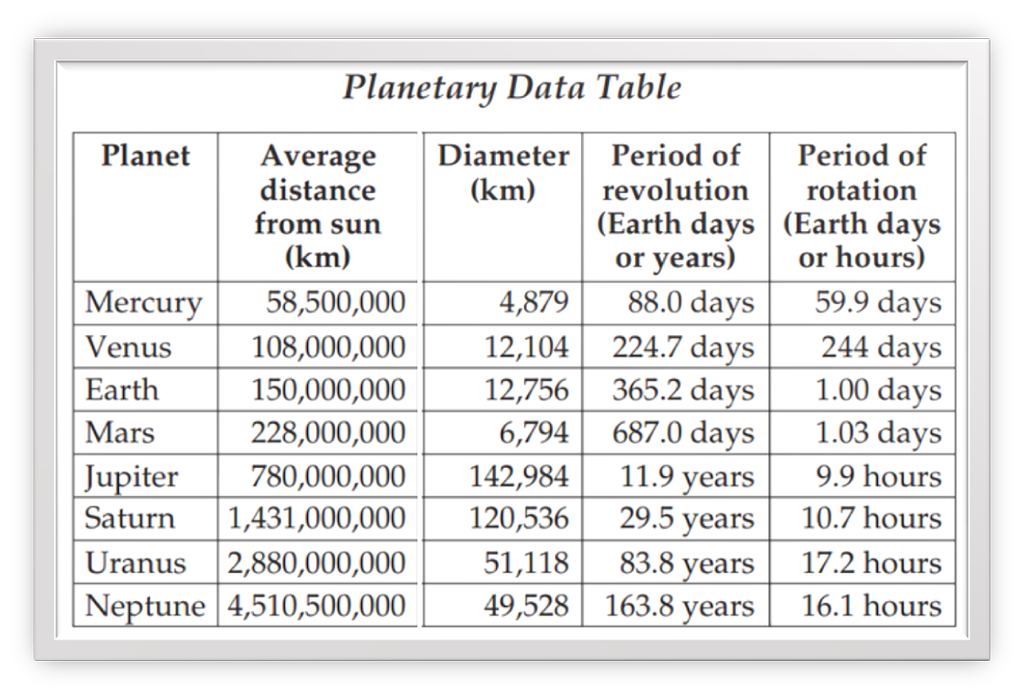
Inner and Outer Planets
- The first four planets of the solar system are called inner planets. These planets have few moons of their own.
- The planets after Mars are called the outer planets of the solar system. All these planets have a ring system around them and possess a large number of moons.
What are the differences between Stars and Planets?
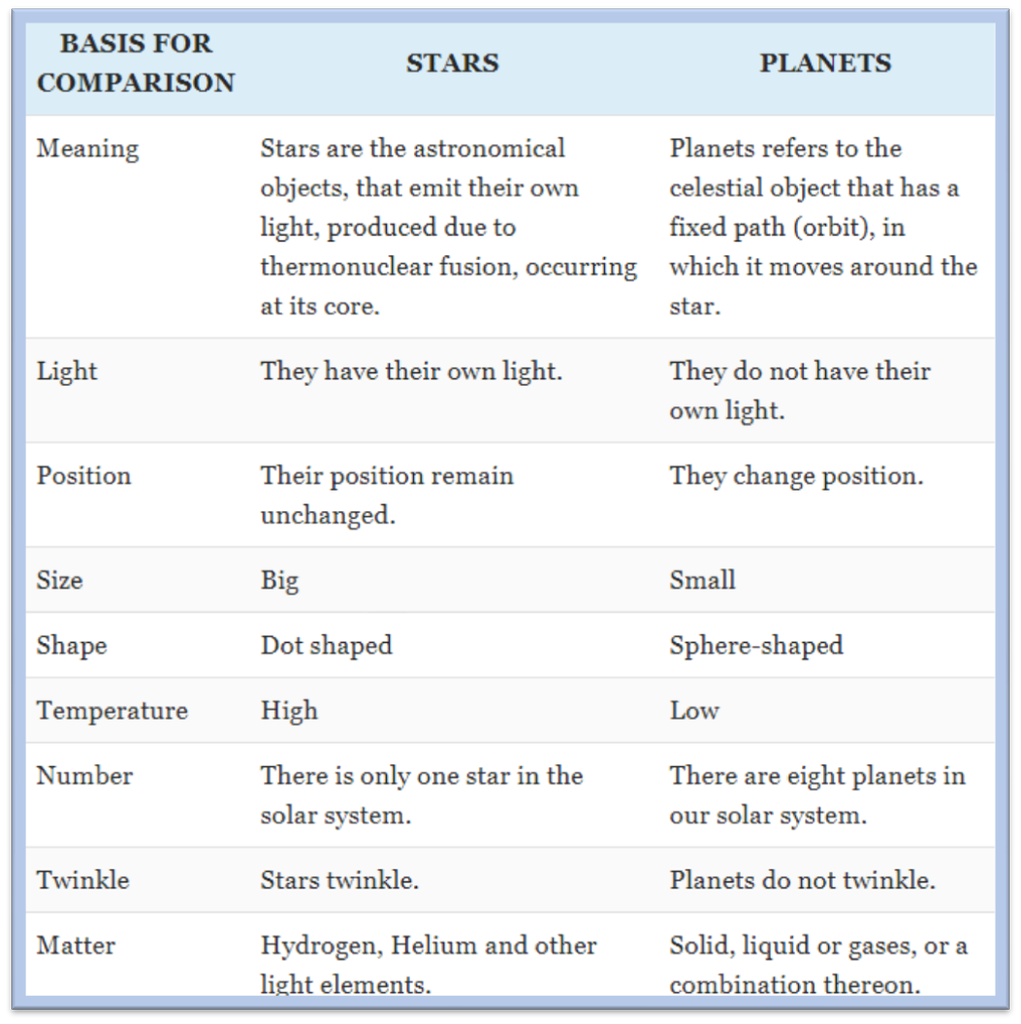
Some Other Members of the Solar System
- Books Name
- Class-8 Science Book
- Publication
- PathSet Publications
- Course
- CBSE Class 8
- Subject
- Science
Some Other Members of the Solar System
Asteroids
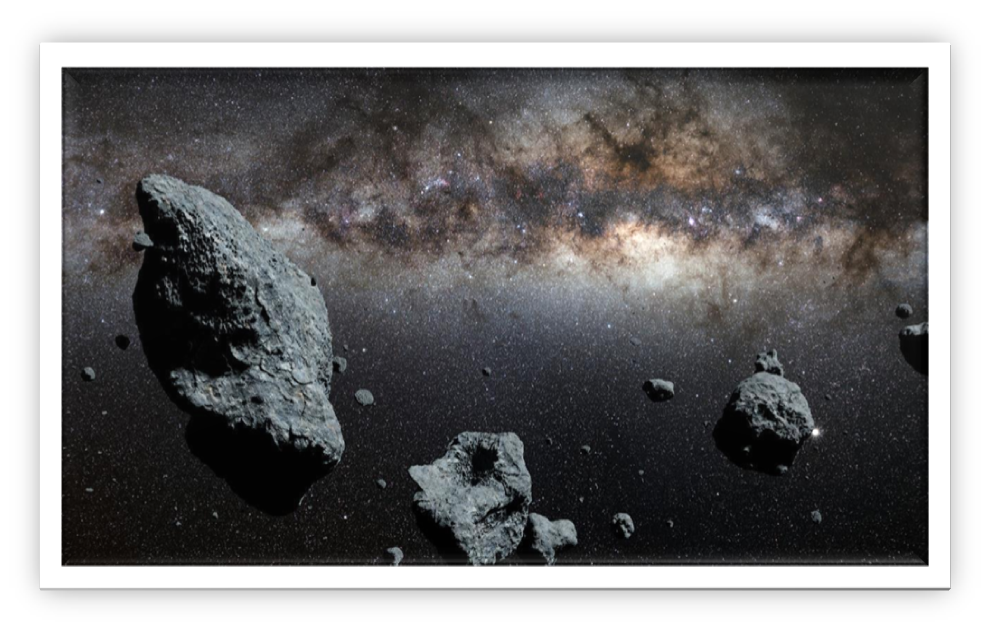
- Like other planets, there are certain celestial bodies that are found in the solar system. Asteroids are small rock-like objects that are found orbiting the sun.
- They are generally found between the orbits of Mars and Jupiter. This region is also called the Asteroid belt. However, asteroids can also be found in other places in the solar system.
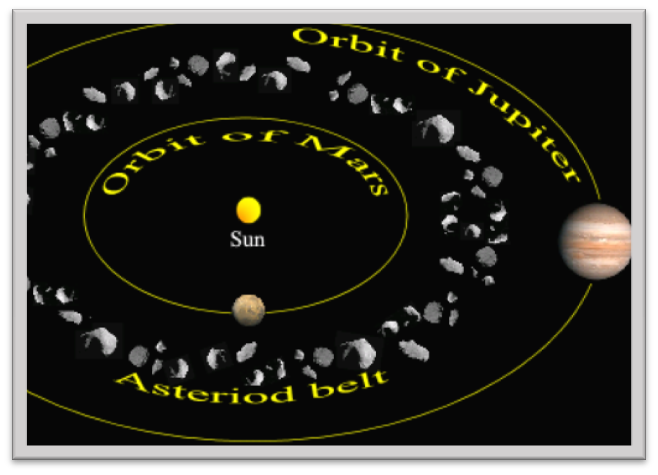
Comet
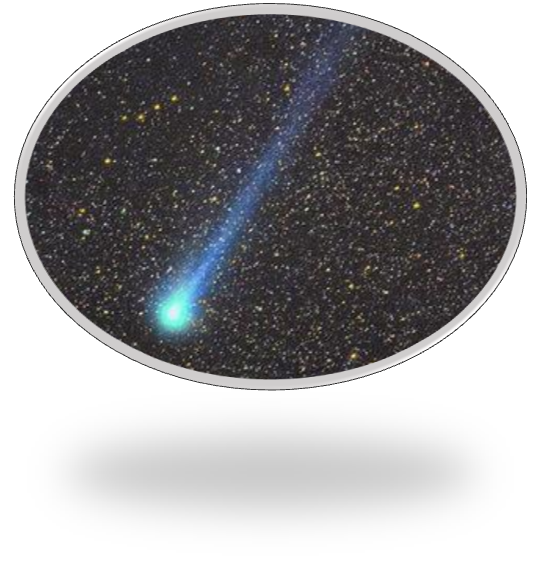
- Comets are big pieces of ice and rock that also revolve around the sun in elliptical-shaped orbits.
- Comets are the leftover pieces of rocks that were formed at the time when the solar system was beginning its formation.
- Comets are often observed to have a tail. This tail appears as a comet approaches the sun.
- At that time, dust and gas are discharged from the comet due to the heat of the sun. Since the comet is approaching the sun, the tail of the comet is always in the opposite direction of the sun.
- As the distance between the sun and the comet increases the size of the tail of the comet also increases.
- Since comets revolve around the sun they can be viewed at periodic times from the Earth.
- For example, Halley's Comet appears after every 76 years. It was last viewed in 1986.
Meteoroids and Meteors
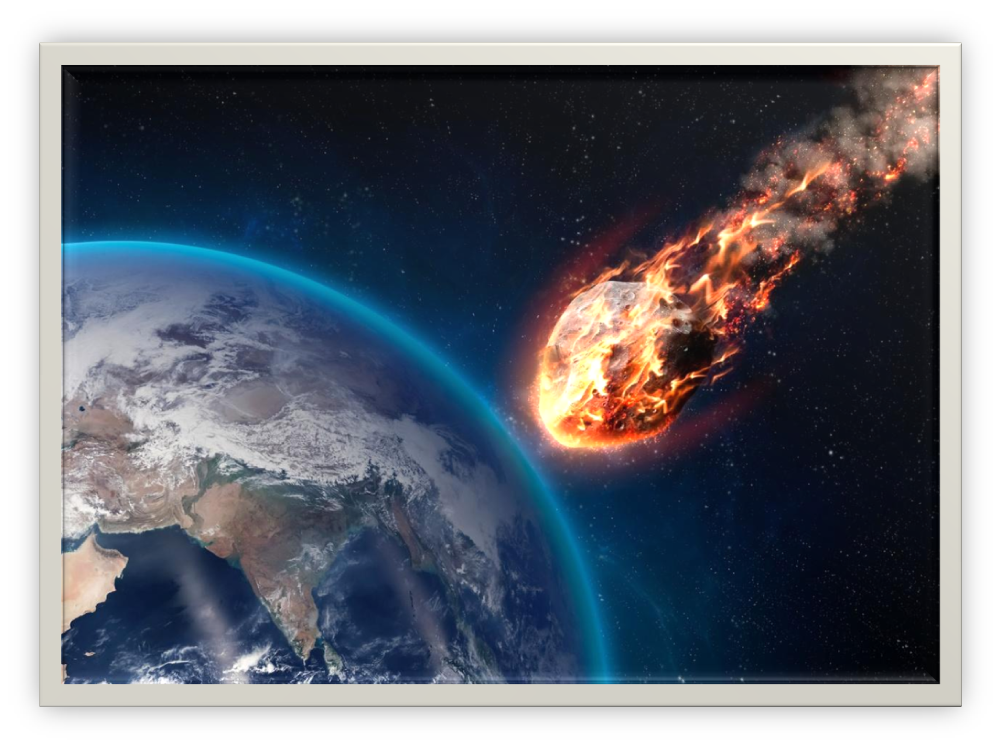
- The asteroids in space sometimes collide with each other and form meteoroids. Hence the small pieces of an asteroid can be called meteoroids.
- From these meteoroids, meteors are formed.
- When a meteoroid enters the atmosphere of the Earth it appears as a streak of light in the sky or a meteor. The Meteors generally have high speed as they enter the atmosphere. Thus, they get heated up due to the friction of the atmosphere.
- Hence the meteors light up as a streak of light. However, they get evaporated in the sky before reaching the Earth's surface and this streak of light is therefore visible for a short period only.
- Meteors are also called shooting stars because of their characteristic feature however they are not stars but just a piece of rock.
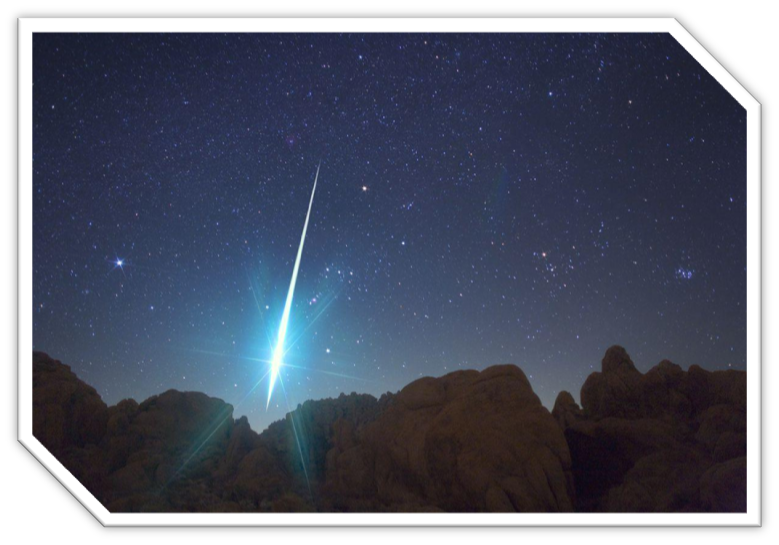
Meteor Shower
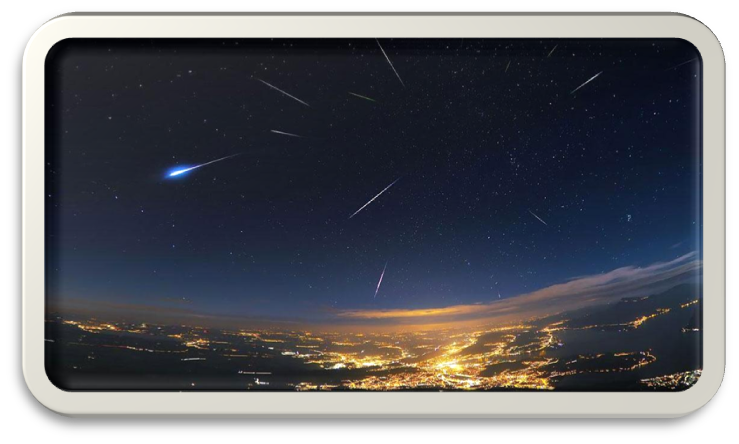
- When the earth crosses a comet's tail a large number of flying meteors can be observed in the sky. This is called a Meteor shower. Certain meteor showers occur periodically in the sky.
Artificial satellites
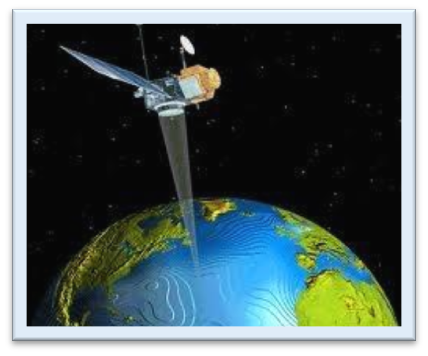
- These are the man-made satellites that are sent out into space to revolve around the earth. They orbit nearer to the earth as compared to the moon. Functions of artificial satellites:
- Weather forecasting
- Transmission of signals of radio and television
- Remote-sensing - acquiring information about an object from a distance, for example, the artificial satellite can acquire information about the earth from a distance
- Telecommunication - transmission of information using radio signals and electromagnetic systems.
Some Indian Artificial Satellites of the Earth:
- Aryabhata
- INSET
- IRS
- Kalpana-1
- EDUSAT
How artificial Satellite is different from a Natural Satellite?

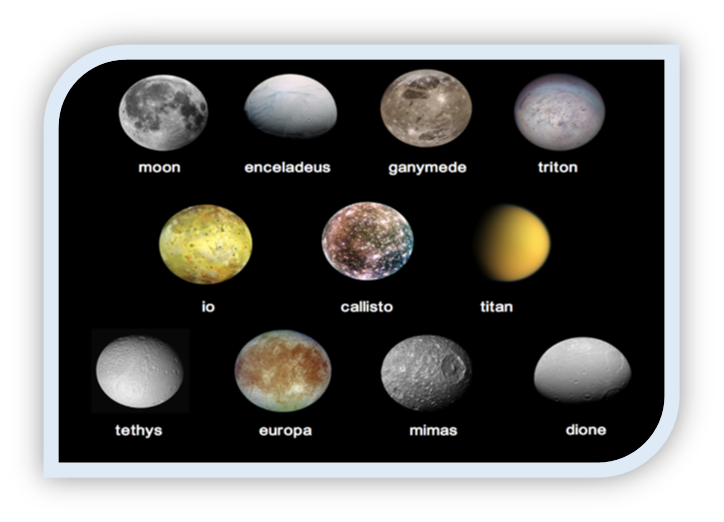

 PathSet Publications
PathSet Publications
